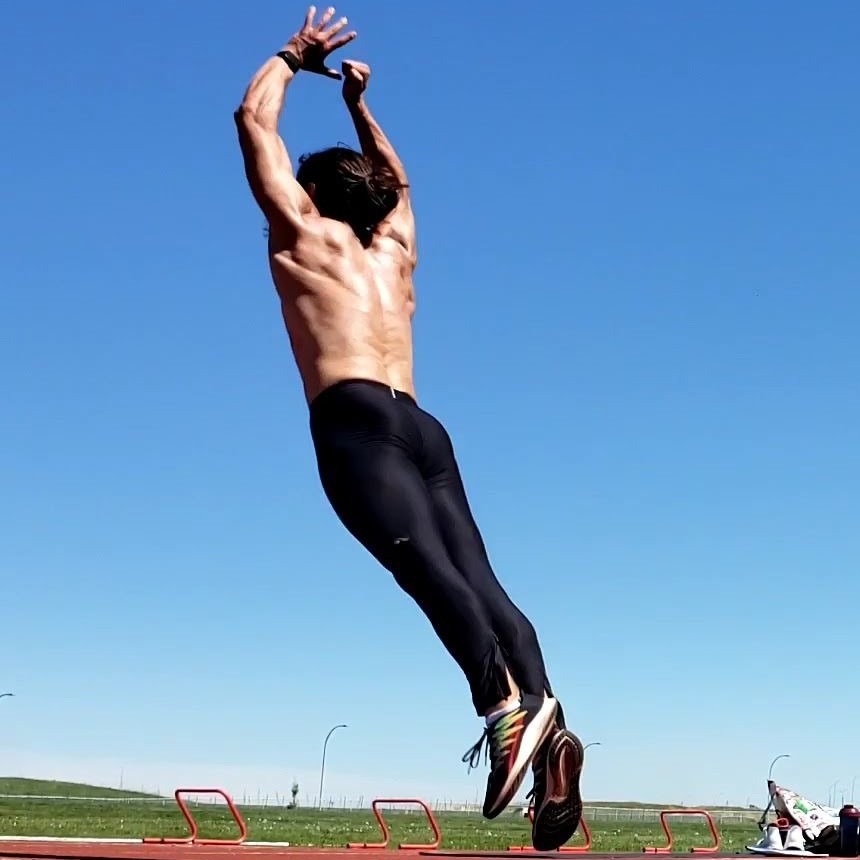Developing the Shock Method Part 2: Exercise Prescription for the Specific Characteristics of the stretch-shortening cycle (SSC)
I discussed Elastic Energy Recoil and its role in the stretch-shortening cycle (SSC) from the prior post. Moreover, I illustrated how to train this characteristic. Now we are taking the next step.
Characteristics of Plyometric Performance
-
- Elastic Energy Recoil
- Stretch Reflex Potentiation – This article’s topic
- Central Nervous System Stimulation
Stretch Reflex Potentiation
With any motor performance regarding the stretch-shortening cycle (SSC), proper timing of force application is necessary to utilize the increased neural potentiation of plyometrics. You must still consider the factors required for the elastic energy recoil (prior post) as they are a prerequisite for improving the stretch reflex potentiation.
The essential characteristic for improving the stretch reflex potentiation is adjusting the technique/movement execution to optimize the relaxation-tension pattern of the stretch-shortening cycle (SSC) movement.
- The temporal optimization of the relaxation-tension relationship is essentially the timing of when to apply force. Too short and not enough tension has been built within the kinetic chain to induce the stretch reflex, and too long the potentiation passes without being used.
- For example, when executing a depth drop to jump, you will not jump as high if you spend too much time on the ground – not applying force fast enough or delaying the initiation. The inverse is true as well; trying to apply the force too soon interrupts the loading of the tissue and prevents the stretch reflex potentiation.
- Depending on the movement of intent, the coupling times can either be “short” or “long,” depending on the duration of force generation.
- A “short” task could be alternate leg bounding, single-leg hops, repeated rebound jumps from a low box, or jumping quickly over multiple obstacles.
- A “long” task could be repeated long jumps, squat jumps, alternating split-squat jumps, and repeated rebound jumps from a high box.
Two ways to improve the stretch reflex potentiation
Decreasing the coupling time of stretch-shortening cycle (SSC) movement.
By decreasing the coupling time – transition from eccentric to concentric action – we reduce the total time required to move from intent.
-
- For example, ground reaction time in sprinting is reduced without compromising total force production, just the rate of production.
Decreasing coupling time is trained by short coupling time tasks.
-
- The emphasis is to have low absolute forces to overcome to ensure coupling time is not impeded.
- Exercise examples: alternate leg bounding, single-leg repeated hops, box rebound jumps on and off a small box, repeated jumps over small obstacles, and side-to-side jumps.
Increasing the power output of the stretch-shortening cycle (SSC) movement.
Increasing the power of the stretch reflex potential leads to higher total and average power outputs.
-
- Increasing power leads to increased throwing speed, increased average power for long-distance running, and greater absolute values for jumping/sprinting.
Increasing power output with done with long coupling tasks.
-
- The emphasis is to create as much force as possible. The coupling time will be greater than the short tasks above, but not so long that they become non-specific (read Part 1 for more details).
- Exercise Examples: repeated long jumps, repeated vertical jumps, depth drops to vertical jumps, and heavy medicine ball throws.
In both cases, execution should be monitored and stopped before either speed or power is compromised.
With most plyometric style exercises, you can use 2-4 sets of 3-5 repetitions with a 1:60 work to rest ratio. Volume can be increased if training intentions are maintained.
Troy Wilson, BScKinH, MScKin, PKin, Team Canada athlete and RockTape Ambassador
Train hard play hard! Get everything you need with Rocktape
More blogs
